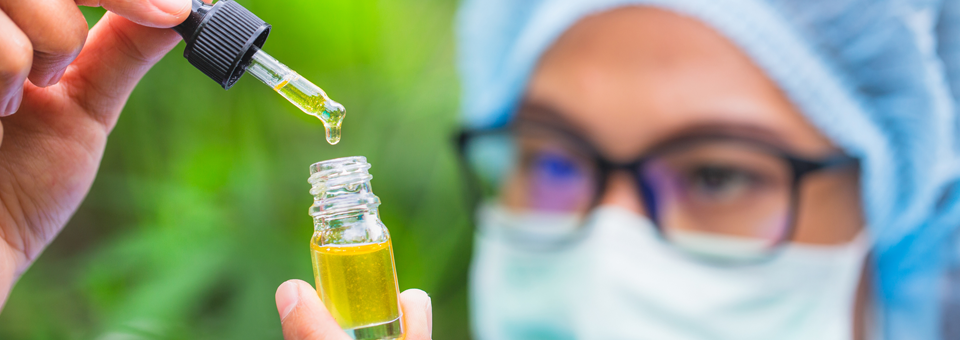In the United States, medicinal plants don’t get the respect they do in other parts of the world.
Around the globe, about 80% of people use herbal remedies as a primary source of their healthcare.1 In the U.S., that number drops down to less than 35%.2
It boils down to one thing: Big Pharma is firmly in control of your health care with its mass production of synthetic drugs.
Because that’s where the big money is.
You see, Big Pharma can’t get patents on herbs or other natural remedies. So they can’t profit from them.
But They Found a Way Around That…
They modify them — ever so slightly.
They add artificial ingredients. They manipulate molecules.
And they come up with a new synthetic (fake) compound they can patent.
The latest example comes from a biopharmaceutical company called Neuropathix. They’re manipulating CBD to turn it into a pain-relieving “analog drug.”
Analog drugs are “substantially similar to controlled substances listed in federal or state drug schedules.”
Oxycontin is the perfect example of this type of Big Pharma “designer drug.” The opioid epidemic that killed 500,000 people proves what a bad idea it is.
The chemists at Neuropathix don’t deny the pain-relieving properties of CBD. But according to the company’s CEO, CBD in its natural form is not as easily absorbed as their analog drug.
So, they synthesized cannabis compounds to develop a new molecule that they claim is roughly 5 times more water-soluble and therefore more absorbable than CBD.
But they didn’t make it better.
You see, you don’t need a pharmaceutical drug to get all of CBD’s benefits and bioavailability.
It’s true that a lot of CBD users are only getting a small fraction of this healing herb’s benefits.
That’s because most CBD doesn’t reach its intended destination – the
cell receptors that make up the body’s endocannabinoid system. In fact, the most common kind of CBD delivery system – oil – doesn’t reach the cell membrane.That means you’re not getting all of the real benefits of CBD.
But you can access all of CBD’s healing benefits – naturally – by choosing an oral CBD spray that uses nanotechnology to allow the CBD molecules to pass through your body’s cells.
This delivery method gets 150% more CBD past your cell membranes.3
And because it’s not a pill or capsule, it avoids being broken down in the liver. And that means you get the full intended dose without having to resort to Big Pharma’s drug.
3 More Ways To Increase Bioavailability
-
- Look for an emulsified product. Some products emulsify their CBD using nanotechnology. This breaks CBD down into even smaller molecules. The smaller and more dispersed the molecules are, the more bioavailable they are, because they pass more easily through cell membranes and into the bloodstream than larger CBD particles.4
-
- Take it with healthy fats. CBD is a fat-soluble compound, meaning it dissolves in fats. This breaks CBD down into smaller molecules that are more easily absorbed by the body. One way to increase CBD’s bioavailability is to mix it with a healthy high-fat snack or meal. A recent study found that people who took CBD with high-fat foods increased their absorption up to 14 times more than those who took it on an empty stomach.5
- Look for full-spectrum CBD. Terpenes are fatty oils found in the essential oils of almost all plants. They occur naturally in hemp and are extracted along with CBD and other compounds to create full-spectrum CBD products. These compounds work together and amplify each other’s benefits, a synergy known as the “entourage effect.” Terpenes increase CBD bioavailability and enhance the therapeutic effects of cannabinoids.
To Your Good Health,
![]()
Al Sears, MD, CNS
References:
1. Ekor M. The growing use of herbal medicines: issues relating to adverse reactions and challenges in monitoring safety. Frontiers in Pharmacology. 2014;4. doi:10.3389/fphar.2013.00177
2. Rashrash M, Schommer JC, Brown LM. Prevalence and Predictors of Herbal Medicine Use Among Adults in the United States. Journal of Patient Experience. 2017;4(3):108-113. doi:10.1177/2374373517706612
3. Cherniakov I, et al. “Piperine-pro-nanolipospheres as a novel oral delivery system of cannabinoids: Pharmacokinetic evaluation in healthy volunteers in comparison to buccal spray administration.” J Control Release. 2017;266:1-7.
4. Bruni N, et al. “Cannabinoid delivery systems for pain and inflammation treatment.” Molecules. 2018;23(10).
5. Birnbaum AK, et al. “Food effect on pharmacokinetics of cannabidiol oral capsules in adult patients with refractory epilepsy.” Epilepsia. 2019;60(8):1586-15

